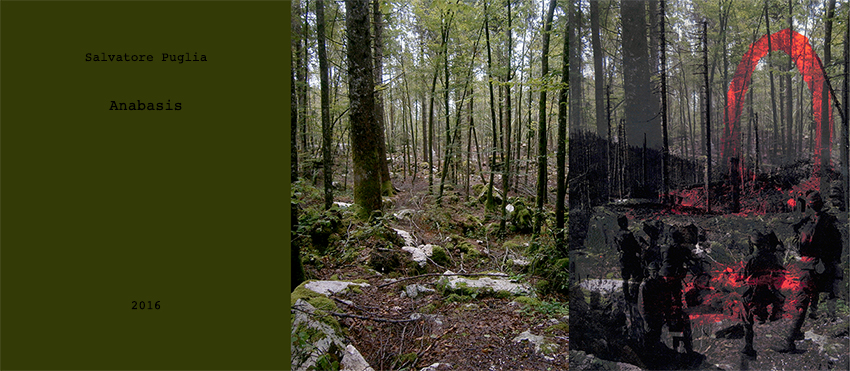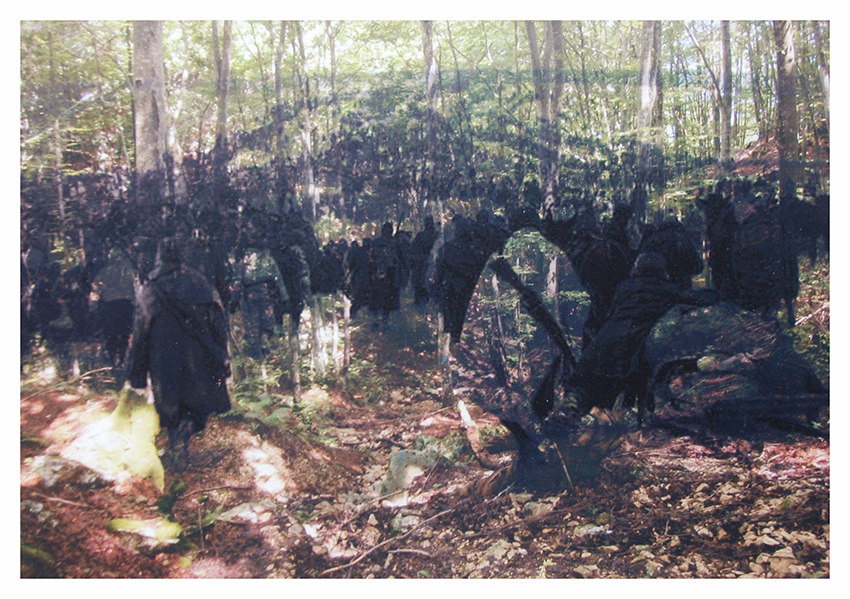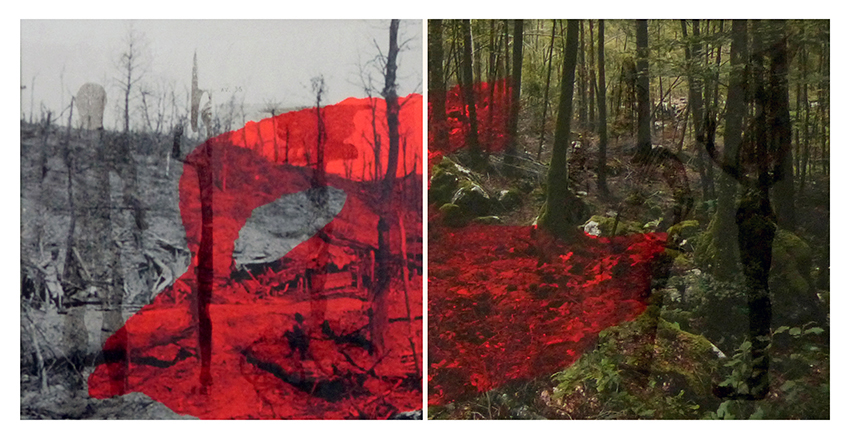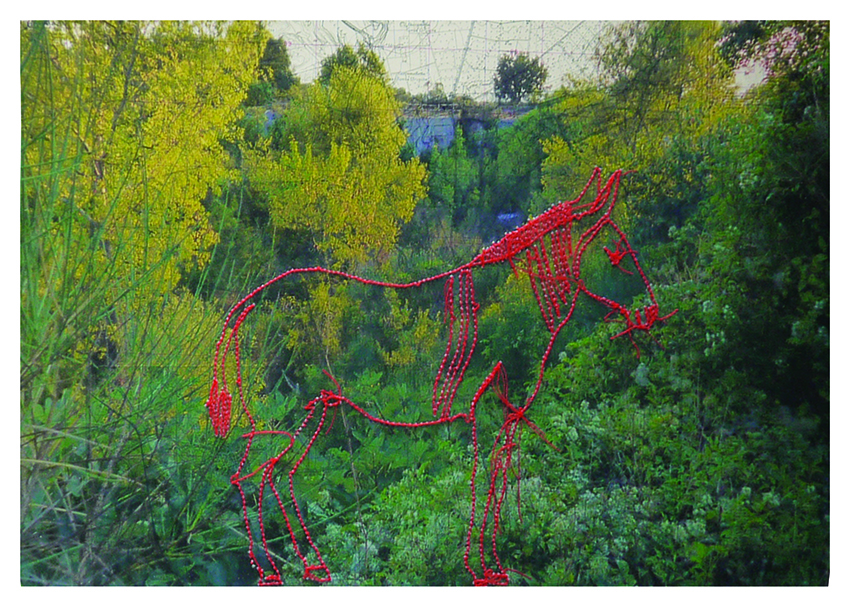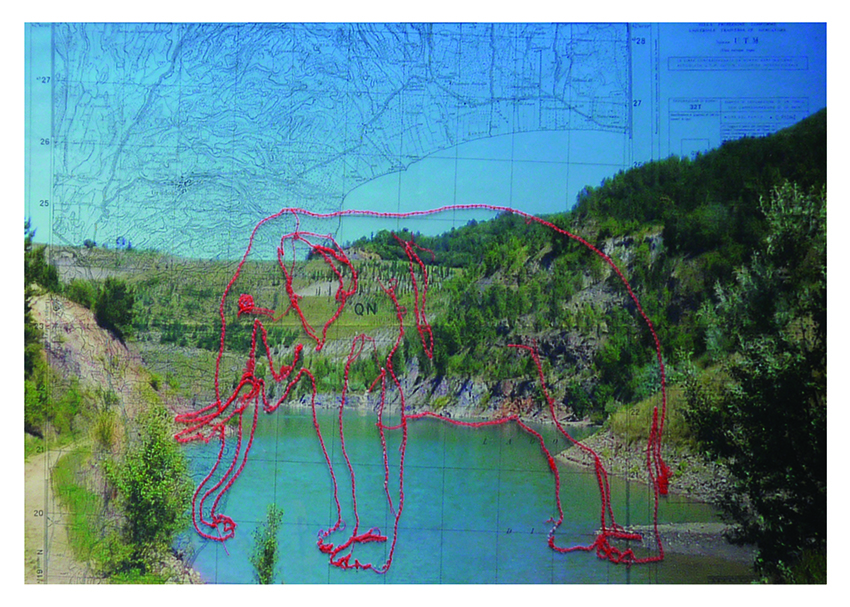- On the Plateau.
Mario Rigoni Stern (1921-2008) had two ‘anabasis experiences’ (1) in his lifetime. The first one involved the retreat of the Italian Expeditionary Corps in Russia, in January 1943. Rigoni was one of the 60,000 ‘Alpini’ elite military corps that Mussolini sent to occupy the Soviet Union, and among the fortunate 20,000 that returned home safely. His second “anabasis” experience occurred two years later, during his escape from a German military concentration camp in April 1945. For ten days, Rigoni wandered through the Styria and Carinthia forests in Austria surviving on berries, bird eggs and snails before encountering an outpost of Italian partisans at an Alpine pass.
I regard Mario Rigoni Stern as one of my spiritual fathers along with Nuto Revelli (1919-2004) and Vittorio Foa (1910-2008). Among the three, it is Rigoni Stern who explored in greatest depth the relationship between humans and their natural environment. The theme of the forest, as a locus of nature, is central to Rigoni’s oeuvre. The pre-Alpine forest, which was completely destroyed by Austrian and Italian bombs between 1915 and 1918 and subsequently replanted, is an example of the blending of the artificial with the natural. By the time Stern’s work Uomini, boschi e api (Men, Woods and Bees,) was published in 1980, the Asiago plateau forest had reverted to a nature state.
The forest is a mirror of the world “as it should be”, a world where “siamo tutti compaesani”, (we all belong to the same village). In this ecosystem, we can all live together, humans and various animal species, once the carrying capacity of the environment is under control. But according to the writer, the ‘good’ forest is not the one that grows freely and spontaneously. Rather it is the one tamed by human labor, where humankind plays the role of the caring gardener.
At the beginning of his book Forests. The Shadows of Civilization, (Stanford 1992), Robert Pogue Harrison quotes the Italian philosopher Giambattista Vico: “This was the order of human institutions: first the forests, after that the huts, then the villages, next the cities, and finally the academies…” (The New science, 1725). But Vico’s text continues as follows: “it is the nature of peoples to be first crude, afterward severe, then benign, later on delicate, eventually dissipate”.
Rigoni Stern considers Vico’s reflection, and assumes that the city (the last stage of human progress before academies, according to Vico) has become a place of “spiritual solitude”, where “barbarity dwells in the very heart of the humans” and states that the woods have become a “place of salvation” (Introduction to Boschi d’Italia, Rome 1993).
As I wandered around Rigoni’s homeland, I recorded some images of forests, which, upon closer inspection, reveal traces of the war: the collapsed trenches and the craters left by bombs. There I encountered a theme related to my Rupestrian series: these sites have also been reclaimed by nature, even if here the traces left behind are the result of humankind’s diabolical engineering rather than its creativity.
The works that bears the title Anabasis come from the superposition of these images and archive images: the Alpini retreating in the Russian snow, the trenches and the woodland of the Asiago plateau after an artillery battle.
2. New landscapes
I have given the title “new landscapes” to these recent works. They describe – not without an ironical reference to romantic landscape paintings – places where the border between natural and artificial is indistinct and unrecognizable – except perhaps only to the expert glance of the geologist or the botanist.
However it is certain that we do not know which of the two antagonists/protagonists — humans or nature – precedes or follows the other. Nor do we know which will triumph in the end. But as the victory of one of them would mean the destruction of both, it would be preferable if they could be reconciled.
PN 01 Vallerosa (Latium, Italy).
An abandoned travertine quarry. In the large cavity lined with white verticals walls, there developed a microclimate that gave rise to lush and varied plant life. Some say that, in spring, thirty varieties of wild orchids can be spotted. The site truly reverts to nature. It is even possible to encounter a large boar as you walk through the bush to reach the site. It happened to me and I don’t who was more frightened: the boar darted in one direction, and I in the other.
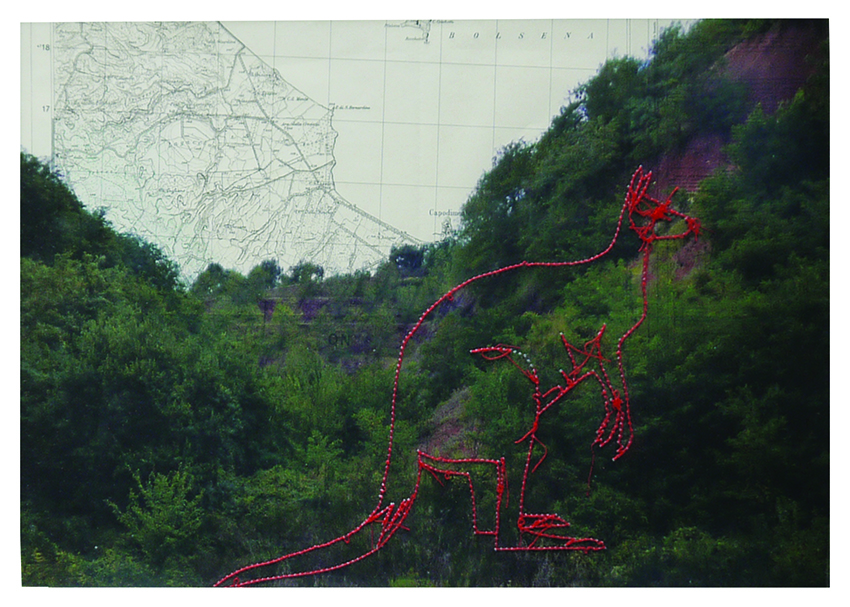 PN 02 Valentano (Latium, Italy).
PN 02 Valentano (Latium, Italy).
A quarry of pozzolana (the red volcanic material used by ancient Romans to cover the walls). As it evoked images of hell, it was used as the setting for some films depicting medieval times. After the quarry was abandoned, its terraces were replanted, but the young trees cannot conceal the regular patterns of the cuts in the hill. It is impossible to reach the site because a thick underbrush has overtaken the quarry’s floor.
PN 03 Alès (Gard, France).
An artificial mountain, a terril, made of waste accumulated over years of exploitation of the coalmines, in the outskirts of the French city of Alès. It would have escaped everyone’s notice — except for the curious conic shape — had a forest fire in 2004 not burned all the vegetation leaving it bare. This fire, which is propagated through the roots of the pine trees planted to hide it, has reached the core of the hill, which continues to burn, slowly, impossible to extinguish.
PN 04 Laval-Pradel (Gard, France).
An extensive open-air mine in the Cévennes region of France. It was exploited between the 1970s and the 1990s, and a historic road leading the Spanish pilgrimage site of Santiago de Compostela (the Chemin de Régordane) was diverted in order to accommodate the mining activities. After the mine was abandoned, three lakes formed (artificial or natural?) in the huge bulldozed spaces, and the national forestry authority is now replanting trees on site. The area is not accessible to the public and I entered the site illegally. The Alès municipality is considering transforming it into a recreation area. It would be a park for motorized sports such as quad, motocross, Jet Ski. In each of the three lakes a different species of fish would be introduced for the pleasure of fishermen. It will be another example of man-made nature.
(1) The term “anabasis” means a “back home” journey in reference to the eponymous literary account (also known in English as The March Up Country) of the hapless Persian military expedition by the 4th-century BC Greek professional soldier and writer Xenophon.
